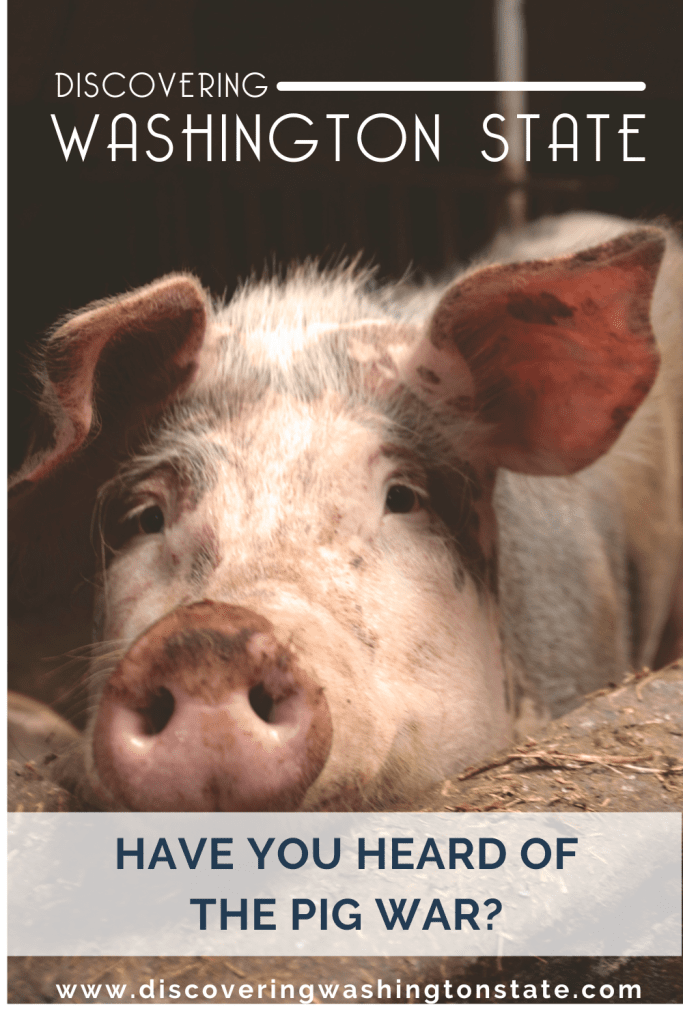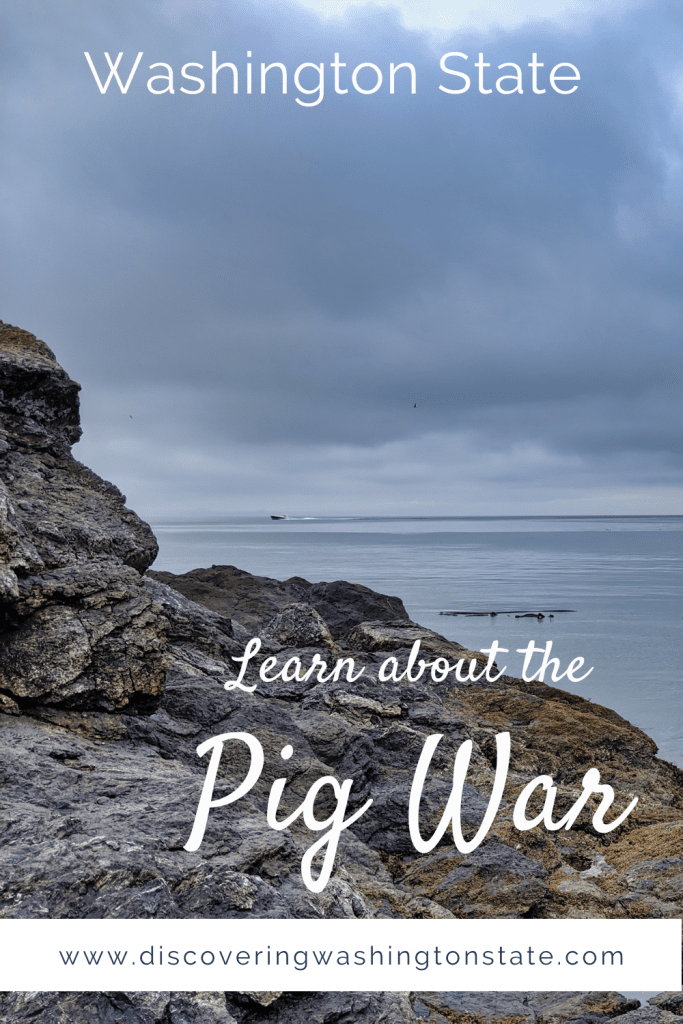As the United States was growing and the population began moving westward, there was an extensive section of land still officially unclaimed. It was organized into what was known as the Oregon Territory with ownership disputes involving Spain, Britain, and the United States.
Today, what was the Oregon Territory includes Washington, Oregon, Idaho, Wyoming, Montana (west of the Continental Divide), and the Province of British Columbia.
How did this happen? It involved a treaty, a pig, a potato, and a war.
A Treaty
Historically, three countries were vying for control of the Oregon Territory when the Spanish decided to withdraw in 1818 and assign its claim to the United States. That paved the way for the 1846 Oregon Treaty, a compromise over the territory that put to rest the disputed ownership of the land between the Rocky Mountains and the Pacific coastline.
The Treaty established the border with Britain and the United States along the 49th parallel, “to the middle of the channel which separates the continent from Vancouver’s Island.” It would continue south to the Strait of Juan de Fuca and west to the Pacific Ocean.
But, the Treaty neglected to include a grouping of islands to the southwest of Vancouver, known as the San Juan Islands. The archipelago sat below the 49th parallel. The islands were surrounded by the Haro Strait to the west and the Rosario Strait to the east. Both Britain and the United States claimed the San Juan Islands as a part of its territory.
Britian & U.S. Tensions Escalate
Citizens from both Britain and the U.S. began to set up farms and businesses on San Juan Island. The natural resources were incredible – abundant marine life, vast fields of timber, and good soil made the islands incredibly attractive.
In 1853, the Hudson’s Bay Company began to populate the south end of the island, taking a considerable tract of land for a sheep farm and a salmon-curing operation. This angered the Americans, and by 1858 many Americans were beginning to set up their own farms near the English settlement. Settlers on the island included men who settled there after failing to find gold in British Columbia.
Washington residents urged the U.S. Congress to evict the British and their corporations. But Congress made no moves to protect the land.
A Potato and a Pig
In June of 1859, a Berkshire boar strayed into Lyman Cutlar’s potato patch.
Cutlar was one of 17 American settlers who started to farm near the island’s southern end who were considered squatters by the British. The boar belonged to the British owned Hudson’s Bay Company Agent, Charles Griffin.
Griffin’s pig often ate potatoes in Cutlar’s garden, and he was frustrated by the constant intrusion. Cutlar chased the pig out of the potato patch and planned to steer it toward the nearby woods. His anger overtook him, and he shot the pig.
Cutlar admitted to killing the pig and offered to pay Griffin $10 as restitution. Griffin wanted $100 for the loss of his pig. When Cutlar refused to pay this sum, Griffin threatened him with arrest. Tensions escalated.
A War
The Americans who farmed the southern end of the island armed themselves and requested military protection.
The U.S. Army and the British Face-Off
In July, U.S. Brigadier General William S. Harney sent 66 men to San Juan Island under the command of Captain George Pickett. Pickett took a strategic spot near the Hudson Bay Company’s wharf on Griffin Bay (north of the Belle Vue sheep farm).
Vancouver Island Governor James Douglas sent three warships commanded by Captain Geoffrey Hornby to remove Pickett and his men. Pickett refused to back down and committed his troops to battle. The British waited and chose to avoid an armed clash.
By the end of August, both sides sent more reinforcements. A total of 461 U.S. soldiers with 14 cannons occupied the wharf against five British warships with 167 guns and 2,140 British sailors.
The situation was clearly getting out of hand. A small local incident had become an interntional dispute, and that dispute had become an armed conflict.
Detente
When President Buchanan realized how the situation was escalating, he sent General Winfield Scott, the U.S. Army Commander, to work with Governor Douglas to deescalate the situation.
Scott suggested a joint occupation. The result was a small American force on the southern end, known as the American Camp. The English Camp was established on the northern end of the island at Garrison Bay. This arrangement lasted for twelve years, both sides living in peace while waiting for the conclusion of the occupation. Apparently, servicemen from both camps were cordial with one another, often attending the same church services.
A Bloodless Treaty
In 1871, in what was called the Treaty of Washington, the two countries agreed to arbitration over the disputed ownership.
Kaiser Wilhelm I of Germany was asked to decide which nation would rule over the San Juan Islands. On October 21, 1872, the Kaiser concluded that the boundary should run through the Haro Strait, which meant that the islands belonged to the United States. The troops withdrew from the English Camp a month later, settling the matter peacefully. The pig war was concluded and the only blood spilled was that of the Berkshire boar.
Visit Both Camps
There’s lots to do on a visit to San Juan Island, it’s a perfect destination for a getaway weekend. And visiting both the English and American camps should be on your list.
Both the English Camp and the American Camp are open for visitors to the San Juan Island National Historical Park. You can visit the parade ground, laundress quarters, and officer’s quarters in the American Camp. The Visitor Center is under construction and expected to re-open in the Spring of 2021.
More information about the American Camp is here.
The English Camp is located on Garrison Bay, which is nine miles from the American Camp. You can tour the British Royal Marine’s parade ground, barracks, blockhouse, commissary, and formal gardens. The British flag flies over the Camp to this day and marks the only place in a U.S. National Park where a foreign flag flies over American soil. Both the flag and pole were
given to the United States as a gift and sign of friendship. Ranger programs are available from June to September.
More information about the English Camp is here.
Save to your favorite Pinterest boards


